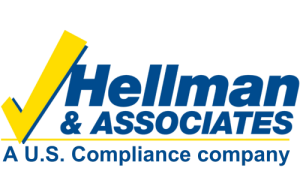Using scaffolds can be much safer than leaning over edges, stretching overhead, or working from ladders. When erected and maintained as intended, they provide secure access when there is not a safe alternative to reaching elevated work positions.
However, if not erected and maintained as intended, scaffolds can expose workers to falls, falling objects from higher levels, scaffold collapse or even electric shock. Failures at attachment points, parts failure, inadequate fall protection, improper construction, insufficient work rules, or changing environmental conditions are all common hazards associated with scaffolds.
To ensure the hazards we’ve discussed are controlled, make yourself familiar with Subpart L of the construction standard, 29, CFR 1926. A competent person must be present during scaffold erection, dismantling, and alteration. The scaffold must also be inspected by a competent person before each work shift or when there is an occurrence that may affect stability.
Always be on the lookout for unsafe conditions and correct them as soon as possible, or report them to your supervisor immediately.
Help your fellow workers be safe on scaffolding and remember these key items:
- Workers must be trained by a qualified person to work on scaffolding
- Check the inspection tag to verify the scaffold was inspected each shift BEFORE it is used by workers
- Look at the working surface; are those scaffold grade planks or boards from the job site?
- Is the working surface fully planked from front to back?
- Are the planks secured in place, do they overlap properly?
- If you see damage to the uprights or cross bars tell workers to get off the scaffolding and report it
- Are there proper guard rails in place or are workers wearing fall protection and tied-off properly?
- Is there snow or ice on the working surface? If so, workers should not be on the scaffold yet
- Is the scaffolding plumb and level and sitting on a solid surface material or on proper mud sills?
- There should be no unauthorized objects keeping the scaffolding level, i.e. rocks or bricks
- Is there proper access to the working level and no climbing on the cross bars?
- Is the scaffolding secured to the building as determined by the minimum base width?
- Are the workers wearing the proper PPE for the tasks they are performing?
- Is the area below the scaffold protected by restricted access?
- Is the scaffold equipped with toe boards to keep objects from falling from the work platforms?
- If using a Baker scaffold, are the wheels locked while the unit is in use?
